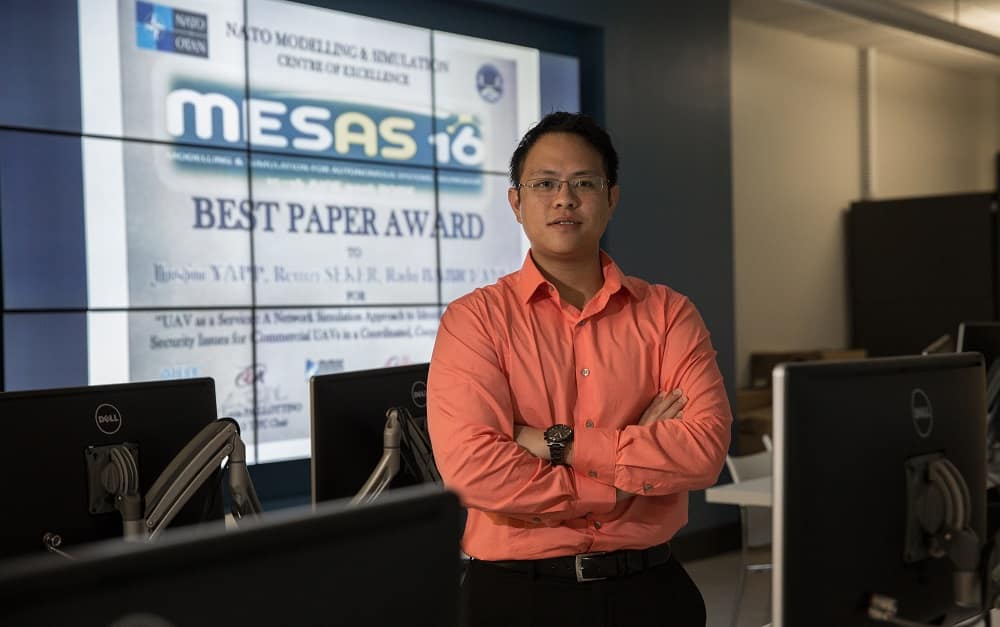Cybersecurity Student, Professors Win NATO Award for UAV Research

When wildfires engulfed 4,900 acres of Southern California this summer, aerial mapping from satellites helped firefighters contain the blaze before it could spread. As satellite and UAV technology becomes increasingly important for capturing real-time data, Embry-Riddle Electrical Engineering and Computer Science Ph.D. student Justin Yapp is developing a cloud-based service for commercial industries to capture and share information.
Yapp’s research, “UAV as a Service: A Network Simulation Environment to Identify Performance and Security Issues for Commercial UAV in a Coordinated, Cooperative Environment,” recently won the Best Paper award at the Modelling & Simulation for Autonomous Systems Workshop hosted by the North Atlantic Treaty Organization (NATO) in June. The two-day workshop held in Rome brought military, academic and industry experts from around the world together to present their research and work.
Cybersecurity Professor Dr. Remzi Seker and Systems Engineering Professor Dr. Radu Babiceanu worked with Yapp on the research. Seker said the achievement reflects the mission of Embry-Riddle’s CyBASE Center that hosts a group of researchers who combine their expertise in security, aerospace and engineering to conduct cybersecurity research associated with critical infrastructures and assured systems.
“CyBASE aims to push the research envelope in aviation and aerospace cybersecurity,” Seker said.
Yapp and the professors received the award based on the originality of the research content and its applicability.
“Commercial industries are using UAVs more and more for agriculture, construction, wild life protection and emergency response,” Yapp said. “The main issue is how to capture, store and stream data securely and efficiently.”
By creating a cloud-based system that would give UAV operators and their customers access to store or share information, Seker said that data gathered could be secured privately or shared on one system. For example, a farmer trying to collect data for his crops could access clusters of available commercial UAVs over cloud infrastructure, with capabilities at a fraction of the cost. Essentially, this would enable business owners and individuals to rent UAVs for short-term use rather than buy them and navigate Federal Aviation Administration guidelines on their own.
“This is analogous to Hertz or Avis renting cars,” Seker said. “It’s a little more complicated than that but the concept is relatively similar.” Babiceanu added that assuring safe and secure operations of UAV as a service requires a complex system and perspective in addressing problems.
Yapp said that a cloud-base system for UAV data could also help improve emergency response.
“Think of wildfires and of all the people who need real-time access to data to make strategic decisions –firefighters, emergency responders, government agencies, news organizations and even the general public,” Yapp said. “With this system and streaming it to the cloud, information reporting would be a lot more efficient.”
For the next phase of Yapp’s research, he will be conducting simulations that will test performance and determine how well the system responds and communicates. His goal is to obtain funding for a test-bed site where he could operate UAVs and the cloud-based communications system in real-time.
